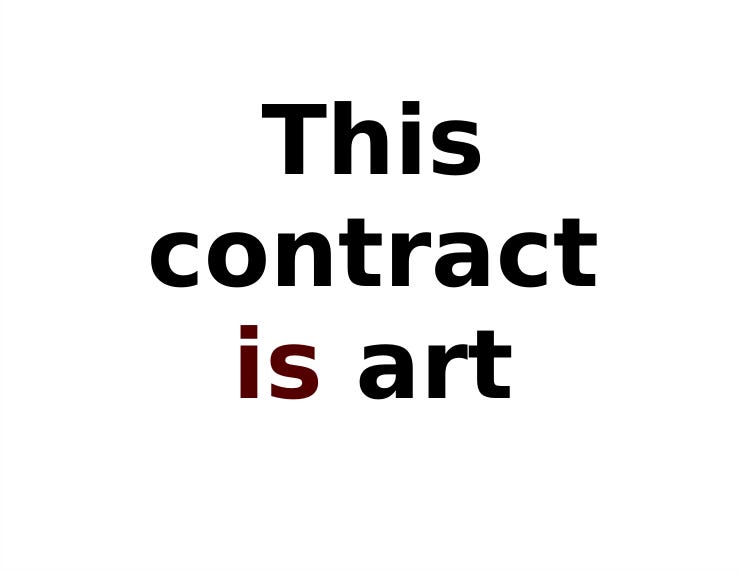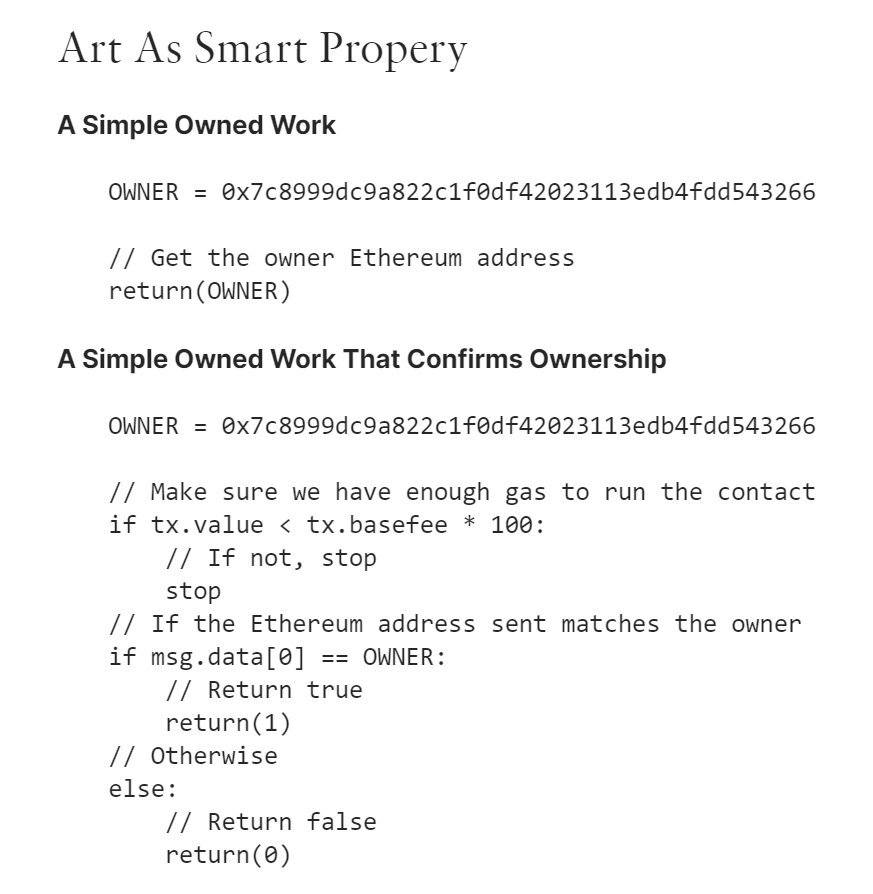Ethereum's Earliest Art Market 👨🎨️

Dear Bankless Nation,
If I asked you, “what’s the oldest Ethereum art market,” what would you say?
If your first guess is something after the Ethereum mainnet launch in July 2015, that’d be totally reasonable. Yet chain historians go back even further, to pre-mainnet Ethereum, for the answer.
That’s because artist, hacker, and writer Rhea Myers — the cryptoartist’s cryptoartist, renowned for placing “technology and culture in mutual interrogation” — created the Ethereum Art Market in July 2014 on the proto-testnet preceding the Olympic testnet. How’s that for early!
Myers is an amazing artist and visionary that’s done much to inspire the modern NFT ecosystem, so I wanted to take a walk down memory lane today and highlight her awesome story and her pioneering art market. Cheers to you, Rhea 🎨
-WMP
“Artworld Ethereum”
Myers’ first foray as an artist to the world of cryptocurrencies came back when there was still, in fact, just one cryptocurrency, Bitcoin. That was 2011.
Next, fast forward to 2014. Vitalik Buterin and co. announced Ethereum at the Miami Bitcoin Conference that January and released the network’s first alpha testnet that February.
Soon after that Myers started experimenting with Ethereum. She’s long been a prolific essayist, so fortunately for us she recorded some of her earliest Ethereum work in a May 2014 essay titled “Artworld Ethereum.”
Therein, and unbeknownst to basically everyone else at the time, the seeds for the future of NFTs were being sown.
Digital art as smart property
In “Artworld Ethereum,” Myers begins by explaining that Ethereum is a blockchain for smart contracts and how smart contracts could be used to create smart property, i.e. things governed directly by code.
Even in those primordial days, she piercingly noted:
“There are three cases of digital art as smart property. The first is the conceptual or code art case, where the code of the contract itself is or contains the artwork. The second is the Ethereum storage case, where a small digital artwork is stored in the Ethereum datastore. The third is the stored identifier case, where only an identifier or proxy for the artwork is stored with the contract.”
For each of these three cases, Myers provided sample code written in Serpent, an early Ethereum programming language. This marked the start of Myers exploring the “applications of Ethereum to the production, exhibition, critique, and institutions of art.”

She would return to this exploratory thread in her next project, the subject of today’s post …
Ethereum Art Market
In July 2014, Myers published “Ethereum Art Market,” a post outlining a proof-of-concept market of the same name.
The smart contract, which Myers wrote in the early Ethereum programming language LLL, allowed users to “register as the owner of a digital artwork contained in a particular file” and “offer the artwork for sale” in exchange for ETH.
So here we have an Ethereum-based contract system for registering artworks and transacting with them from over 7 years ago! “If it's prohibitively difficult to experiment in the existing art market, we can make new markets for new kinds of art,” Myers wrote at the time.
This early achievement has proven groundbreaking, and it reminds us once more that the current NFT boom has hardly arrived in a vacuum — it’s blossomed atop the shoulders of pioneers like Myers.

That’s why it’s been great to see her gain newfound respect this year as more people have started digging into the rich history of early blockchain art. For example, Myers’ Secret Artwork NFT was curated for Sotheby’s Natively Digital auction earlier this year. The fine art broker hailed the artist:
“Rhea Myers stands out as perhaps the most important and overlooked artist in the crypto art movement; few have quietly offered more to the medium. Myers was one of the earliest creatives to adopt blockchain technology as an instrument for artistic creation. With her unquestionable influence, conveyed through her explorative and educational research, Myers’ pioneering role in the digital art space is yet to be fully recognised.”
I think that’s a great description, and I certainly agree that Myers deserves more recognition. So I say let’s remember her work and follow her lead — let’s be creative, let’s experiment, let’s use our own work to also explore what it means, and what we might do, at this great crossroads of culture and tech.
Action steps
- 📺 Watch “How OG Crypto Artist Rhea Myers Sold a Never-Seen Artwork at Sotheby's” by Unchained Podcast
- 📺 Watch “Defining the Metaverse” by Bankless